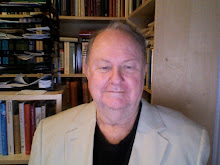"Corpus Christi" revisited
In the controversy, which was enacted entirely in the present mode, neither side seemed to be aware of the deep roots, stretching over a thousand years, of this kind of play in Western culture.
During the the Middle Ages the celebration of liturgical feasts invited expansion in the form of poetry and music, deployed to impress on the congregation the significance of the events commemorated. In the tenth century the Benedictines of St. Gall created sequences, hymns, litanies, and tropes, setting them to music. The tropes—elaborations of parts of the liturgy, particularly the Introit—found wide acceptance, remaining in use in various forms until the end of the seventeenth century. These tropes were dramatic in construction and, as their musical settings prove, were sung alternately by two choirs of men and boys, or by two half-choirs.
The history of the ecclesiastical drama begins with the trope sung as Introit of the Mass for Easter Sunday. The conversation held between the holy women and the angels at Christ's tomb forms the basic text (the famous “Quem quaeritis,” Whom do you seek?). The trope, however, did not develop into a dramatic scene until it was brought into connection with the Descent from the Cross.
This kernel of liturgical Easter celebration grew through the addition of Biblical sentences, hymns, and sequences, in particular the "Victimae paschali," which dates from the first half of the eleventh century. Other additions were the representation of Peter and John running to the grave, and the appearance of Jesus, who thenceforth becomes the central figure.
Eventually the dramas moved from church to the exterior--the churchyard and the public marketplace. These early performances were given in Latin, and were preceded by a vernacular prologue spoken by a herald who gave a synopsis of the events.
In 1210 the pope forbade clergy to act in public, so that the organization of the dramas tended to be taken over by town guilds, with several ensuing changes. Vernacular texts gradually replaced Latin, and non-Biblical passages were added along with comic scenes.
In their day, the Easter Plays represented the highest development of the dramatic art. Nevertheless the climactic events in the life of Jesus did not suffice: the people wished to see his whole life. Since Jesus’ persecution is intelligible only in the light of his work as teacher, this part of the life of Christ joined the texts. Moreover, some authors went back to the Old Testament for symbolic scenes, which they added to the passion plays as "prefigurations," Some plays begin with the Creation, the sin of Adam and Eve, and the fall of the angels.
Two elaborations, short dramas in their own right, were inserted: the Lament of Mary, Jesus’ mother, and the Mary Magdalene Play. The latter piece depicts the seduction of Mary Magdalene by the devil and her sinful life up to her conversion. This proved to be a juicy role, giving rise to the English adjective “maudlin.”
About two years ago, an obscure theater group in Los Angeles, headed by the director Ric Arzner, revived McNally’s modern-day passion play. They gradually improved their conception, taking the production on a national and international tour. I was privileged to see the last performance in New York’s Greenwich Village this last Sunday.
While the play seemed a little jokey and uncertain in the opening sequences, I found the main part of it moving, as did the audience. The play begins with the days of Joshua (as the Jesus figure is known) at Pontius Pilate High School in Corpus Christi, Texas, and then quickly shifts to a timeless realm with many features of Roman Palestine. Joshua officiates at a the wedding of two men. At the end, in an interesting twist, he is mockingly crowned "King of the Queers."
McNally, who was present, thanked the group for in effect giving his play back to him. The actors perform without salary. Outstanding among them was the charismatic Steve Callahan, enacting the role of Judas.
In retrospect, several aspects of this production of “Corpus Christi” seem problematic. As originally conceived, the play was to have an all-male cast. However, the new production divided the cast between men and women, so that John the Baptist and several disciples were played by female performers. Suspension of disbelief was at best imperfect, and I can’t see what was gained by this excursion into the realm of “nontraditional casting.” In view of the gender bending, it is curious that the figure of Mary Magdalene does not appear in the text of the play.
In the discussion period after the performance we heard a great deal about the need of modern persons to experience “spirituality,” which apparently overrides specific religious doctrines and prescriptions. I confess that I don’t know what is meant by this spirituality.
We also heard that enduring mantra: the only important thing is love. I’m sure that we can all agree that the world would be a better place if there was more love. However, can andy decent person experience love for a Hitler or a Pol Pot? I don’t believe that one should. Such monsters must be opposed with all one’s might.
A bit of light was thrown, perhaps inadvertently, on this problem by one brief episode in the play. Confronted by an opponent, Jesus becomes hostile. When one of the disciples seeks to rebuke him for not adhering to his precept of turning the other cheek, Jesus replies “I was in a good mood then.” It would seem that the love imperative is not absolute after all.

